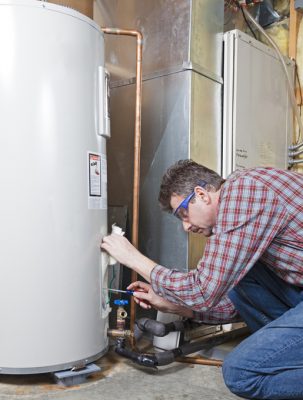Almost everyone may have their own unique idea involving Tips For Maintaining Your Hot Water Heater.

Warm water is necessary for day-to-day convenience, whether it's for a revitalizing shower or washing recipes. To guarantee your hot water system runs effectively and lasts much longer, routine maintenance is vital. This post offers useful ideas and insights on how to keep your home's hot water system to stay clear of interruptions and costly fixings.
Intro
Maintaining your home's warm water system might seem challenging, yet with a couple of simple steps, you can ensure it runs smoothly for several years ahead. This guide covers every little thing from understanding your warm water system to DIY maintenance tips and recognizing when to call in expert help.
Relevance of Maintaining Your Warm Water System
Regular upkeep not only expands the life expectancy of your warm water system however additionally ensures it runs efficiently. Ignoring maintenance can cause decreased effectiveness, higher power expenses, and even early failure of the system.
Signs Your Warm Water System Requirements Maintenance
Understanding when your hot water system requires interest can prevent significant issues. Keep an eye out for indications such as inconsistent water temperature level, unusual sounds from the heating unit, or rusty water.
Recognizing Your Hot Water System
Before diving right into maintenance jobs, it's handy to comprehend the standard components of your hot water system. Commonly, this includes the water heater itself, pipelines, anode poles, and temperature level controls.
Monthly Maintenance Tasks
Routine month-to-month checks can aid catch minor problems prior to they escalate.
Flushing the Hot Water Heater
Purging your water heater eliminates debris build-up, improving efficiency and extending its life.
Checking and Changing Anode Rods
Anode poles prevent rust inside the storage tank. Evaluating and changing them when broken is crucial.
Examining and Changing Temperature Level Setups
Adjusting the temperature settings makes sure ideal efficiency and safety and security.
DIY Tips for Maintenance
You can carry out a number of upkeep jobs on your own to maintain your warm water system in top problem.
Looking for Leakages
Consistently inspect pipes and connections for leaks, as these can result in water damage and higher expenses.
Checking Stress Relief Valves
Evaluating the pressure relief valve ensures it operates appropriately and stops extreme stress build-up.
Insulating Pipelines
Shielding warm water pipelines minimizes warm loss and can save power.
When to Call a Specialist
While DIY maintenance is beneficial, some problems require specialist experience.
Complicated Problems Requiring Specialist Assistance
Examples consist of significant leaks, electric issues, or if your water heater is consistently underperforming.
Regular Specialist Maintenance Benefits
Specialist upkeep can consist of extensive inspections, tune-ups, and making sure compliance with safety and security requirements.
Conclusion
Normal maintenance of your home's warm water system is important for effectiveness, long life, and cost financial savings. By adhering to these suggestions and understanding when to look for professional help, you can guarantee a trustworthy supply of warm water without unexpected interruptions.
How to Maintain an Instant Hot Water Heater
- Before tinkering with your hot water heater, make sure that it’s not powered on. You also have to turn off the main circuit breaker and shut off the main gas line to prevent accidents. Also turn off the water valves connected to your unit to prevent water from flowing into and out of the appliance.
- 2. When you’re done, you have to detach the purge valves’ caps. These look like the letter “T” and are situated on either side of the water valves. Doing so will release any pressure that has accumulated inside the valves while at the same time avoid hot water from shooting out and burning your skin.
- 3. When the purge valves’ caps are removed, you have to connect your hosing lines to the valves. Your unit should have come with three hoses but if it didn’t, you can purchase these things from any hardware or home repair shops. You can also get them from retail stores that sell water heating systems. Read the user’s manual and follow it to complete this task properly. When the hosing lines are connected, open the purge port’s valves.
- 4. You should never use harsh chemical cleaners or solutions when cleaning your unit. Make use of white vinegar instead. It should be undiluted and you’ll probably use about 2 gallons.
- 5. Now flush your water heater. This task should probably take about 40 minutes. We can’t give you specific directions for this because the procedure is carried out depending on the type, model and brand of your heater. With that being said, refer to the user’s manual.
- 6. When you’re done draining the unit, you have to turn off the purge port valves again. Remove the hosing lines that you earlier installed on each of the water valves. Put the valve caps (purge port) back in their respective places and be very careful so as not to damage the rubber discs that are found inside these caps.
- 7. Now that everything’s back in place, check your user’s manual again to find out how to reactivate your water heating system.
- 8. Once it is working, turn one of your hot water faucets on just to let air pass through the heater’s water supply pipes. Leave the tap on until water flows smoothly out of it.
https://www.orrplumbing.com/blog/2014/september/how-to-maintain-an-instant-hot-water-heater/

I came across that piece of writing on How to Maintain Your Water Heater & Prolong its Life when doing a lookup on the internet. Sharing is caring. One never knows, you will be helping someone out. I enjoy your readership.
This Website
Comments on “Ways to Effectively Care for Your Home's Hot Water SystemSteps to Prolong the Life of Your Home's Hot Water System Through Maintenance”